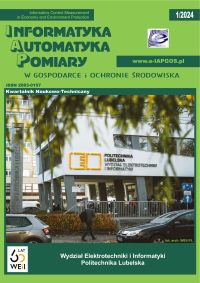Andaló F. A. et al.: Shape feature extraction and description based on tensor scale. Pattern Recognition 43(1), 2010, 26–36 [https://doi.org/10.1016/j.patcog.2009.06.012].
DOI: https://doi.org/10.1016/j.patcog.2009.06.012
Avrunin O. G. et al.: Features of image segmentation of the upper respiratory tract for planning of rhinosurgical surgery. 39th International Conference on Electronics and Nanotechnology, ELNANO 2019, 485–488.
DOI: https://doi.org/10.1109/ELNANO.2019.8783739
Deng Y., Tang X., Qu A.: Correlation Tensor Decomposition and Its Application in Spatial Imaging Data. J. of the American Statistical Association 118(541), 2023, 440–456 [https://doi.org/10.1080/01621459.2021.1938083].
DOI: https://doi.org/10.1080/01621459.2021.1938083
De Lathauwer L.: Signal Processing based on Multilinear Algebra. PhD thesis, Katholieke Universiteit Leuven, 1997.
Dubrovin B. A., Fomenko A. T., Novikov S. P.: Modern Geometry – Methods and Applications Pt. 1. Springer, New York 1992.
DOI: https://doi.org/10.1007/978-1-4612-4398-4_1
Comon P.: Tensor decomposition: State of the art and applications. V. J. G. McWhirter, I. K. Proudler (eds): Mathematics in Signal Processing, Oxford University Press, Oxford 2002.
DOI: https://doi.org/10.1093/oso/9780198507345.003.0001
Fernandez J. A. et al.: Zero-Aliasing Correlation Filters for Object Recognition. IEEE Trans. on Pattern Analysis and Machine Intelligence 37(8), 2015, 1702–1715.
DOI: https://doi.org/10.1109/TPAMI.2014.2375215
Fu Y., Huang T. S.: Image Classification Using Correlation Tensor Analysis. IEEE Trans on Image Processing 17(2), 2008, 226–234.
DOI: https://doi.org/10.1109/TIP.2007.914203
Grasedyck L.: Hierarchical Singular Value Decomposition of Tensors. SIAM Journal on Matrix Analysis and Applications 31(4), 2010 2029–2054 [https://doi.org/10.1137/090764189].
DOI: https://doi.org/10.1137/090764189
Kolda T. G., Bader B. W.: Tensor decompositions and applications. SIAM Rev. 51, 2009, 455–500.
DOI: https://doi.org/10.1137/07070111X
Kvуetnyy R. et al.: Inverse correlation filters of objects features with optimized regularization for image processing. Proc. SPIE 12476, 2022, 124760Q [https://doi.org/10.1117/12.2664497].
DOI: https://doi.org/10.1117/12.2664497
Orazayeva A. et al.: Biomedical image segmentation method based on contour preparation. Proc. SPIE 12476, 2022, 1247605 [https://doi.org/10.1117/12.2657929].
DOI: https://doi.org/10.1117/12.2657929
Oseledets I. V.: Tensor-train decomposition. SIAM Journal on Scientific Computing 33(5), 2011, 2295–2317 [https://doi.org/10.1137/090752286].
DOI: https://doi.org/10.1137/090752286
Pavlov S. V.: Information Technology in Medical Diagnostics. W. Wójcik, A. Smolarz (eds), CRC Press, 2017.
Panagakis Y. et al.: Тensor Methods in Computer Vision and Deep Learning. Proceedings of the IEEE 105(5), 2021, 863–890 [https://doi.org/10.1109/JPROC.2021.3074329].
DOI: https://doi.org/10.1109/JPROC.2021.3074329
Phan A. H., Cichocki A.: Tensor decompositions for feature extraction and classification of high dimensional datasets. Nonlinear Theory and Its Applications IEICE 1(1), 2010, 37–68 [https://doi.org/10.1587/nolta.1.37].
DOI: https://doi.org/10.1587/nolta.1.37
Timchenko L. I. et al.: Q-processors for real-time image processing. Proc. SPIE 11581, 2020, 115810F [https://doi.org/10.1117/12.2580230].
Tucker L. R.: Some mathematical notes on three mode factor analysis. Psychometrika 31(3), 1966, 279–311 [https://doi.org/10.1007/BF02289464].
DOI: https://doi.org/10.1007/BF02289464
Vijaya Кumar B. V. K., Mahalanobis A., Juday R. D.: Correlation pattern recognition. Cambridge University Press, Cambridge 2005.
DOI: https://doi.org/10.1017/CBO9780511541087
Wilkinson J. H., Reinsch C.: Handbook for Automatic Computation. Linear Algebra. Heidelberg New York, Springer Verlag, Berlin, 1974.







